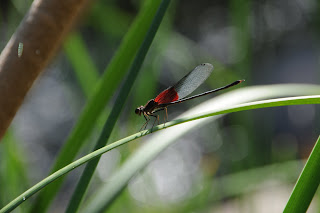



 Elephant Mountain Spur Cross Conservation Area Located just a few minutes north of Scottsdale, the rugged beauty of Spur Cross Ranch Conservation Area is an island of pristine Sonoran desert surrounded by a sea of golf greens and adobe rooftops. The Elephant Mountain trail uses a maze of old Jeep tracks and primitive paths that cut through stream washes, grasslands and boulder fields to explore a remote section of this area. The commotion of the busy trailhead is soon left behind as the trail descends along a volcanic ravine where ancient ruins pepper the landscape. The ruins themselves are difficult to locate—and that’s the way park rangers would like to keep it—to help preserve the fragile artifacts. However, it’s still possible to learn more about the ruins by participating in ranger-led interpretive hikes. About a mile into the hike, at the Tortuga-Elephant Mountain trail junction, the distinct pachyderm profile of Elephant Mountain takes center stage. From here, the destination is clearly visible. The trail heads up hill to a saddle below the “tusks”. The saddle, located at the 3.5-mile point, offers panoramic views of Sugarloaf Mountain, Skull Mesa and the McDowell Mountains. But that’s not the best part—teetering atop the “tusks” are a series of ancient stonewalls. However, don’t even think about scrambling up to explore them because the area is off limits, except, of course, to ranger-led hikes. LENGTH: 9.2 miles out-and-back RATING: moderate (route-finding skills are required) ELEVATION: 2,400' - 3,200' FEE $3 daily fee per person. The self-pay station requires exact change. GETTING THERE: From Loop 101IN north Phoenix, exit at Cave Creek Road and drive north for approximately 15 miles to Spur Cross Ranch Road. This is an easy-to-miss junction located just before entering the busy main drag of Cave Creek. It is signed and the turn off is on the left. From here, the road jogs north and then makes a tight turn to the right to another funny junction. There's a BIG sign here pointing north (go left) to Spur Cross Ranch. Continue north for 4.2 miles to the parking lot on the left. The last mile of the road is good dirt and passable by sedan. HIKE DIRECTIONS: Follow the Tortuga trail for 1.2 miles to the Elephant Mountain trail junction. From there, the trail becomes primitive, marked only by rock cairns and faint footpaths.
Elephant Mountain Spur Cross Conservation Area Located just a few minutes north of Scottsdale, the rugged beauty of Spur Cross Ranch Conservation Area is an island of pristine Sonoran desert surrounded by a sea of golf greens and adobe rooftops. The Elephant Mountain trail uses a maze of old Jeep tracks and primitive paths that cut through stream washes, grasslands and boulder fields to explore a remote section of this area. The commotion of the busy trailhead is soon left behind as the trail descends along a volcanic ravine where ancient ruins pepper the landscape. The ruins themselves are difficult to locate—and that’s the way park rangers would like to keep it—to help preserve the fragile artifacts. However, it’s still possible to learn more about the ruins by participating in ranger-led interpretive hikes. About a mile into the hike, at the Tortuga-Elephant Mountain trail junction, the distinct pachyderm profile of Elephant Mountain takes center stage. From here, the destination is clearly visible. The trail heads up hill to a saddle below the “tusks”. The saddle, located at the 3.5-mile point, offers panoramic views of Sugarloaf Mountain, Skull Mesa and the McDowell Mountains. But that’s not the best part—teetering atop the “tusks” are a series of ancient stonewalls. However, don’t even think about scrambling up to explore them because the area is off limits, except, of course, to ranger-led hikes. LENGTH: 9.2 miles out-and-back RATING: moderate (route-finding skills are required) ELEVATION: 2,400' - 3,200' FEE $3 daily fee per person. The self-pay station requires exact change. GETTING THERE: From Loop 101IN north Phoenix, exit at Cave Creek Road and drive north for approximately 15 miles to Spur Cross Ranch Road. This is an easy-to-miss junction located just before entering the busy main drag of Cave Creek. It is signed and the turn off is on the left. From here, the road jogs north and then makes a tight turn to the right to another funny junction. There's a BIG sign here pointing north (go left) to Spur Cross Ranch. Continue north for 4.2 miles to the parking lot on the left. The last mile of the road is good dirt and passable by sedan. HIKE DIRECTIONS: Follow the Tortuga trail for 1.2 miles to the Elephant Mountain trail junction. From there, the trail becomes primitive, marked only by rock cairns and faint footpaths.INFO & MAPS : Spur Cross Ranch Conservation Area: http://www.maricopacountyparks.net/assets/1/6/spur-cross-8x11.pdf
















